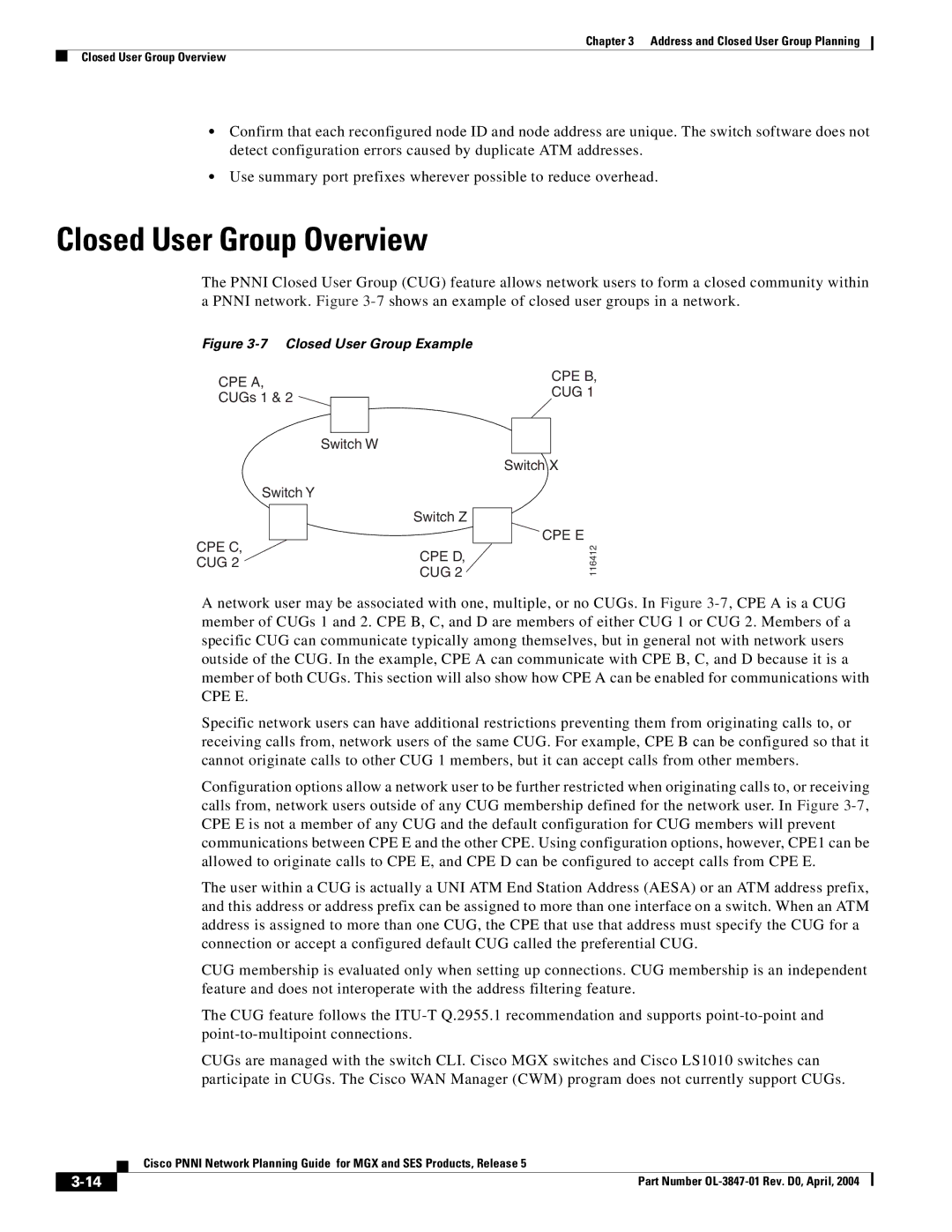
Chapter 3 Address and Closed User Group Planning
Closed User Group Overview
•Confirm that each reconfigured node ID and node address are unique. The switch software does not detect configuration errors caused by duplicate ATM addresses.
•Use summary port prefixes wherever possible to reduce overhead.
Closed User Group Overview
The PNNI Closed User Group (CUG) feature allows network users to form a closed community within a PNNI network. Figure
Figure 3-7 Closed User Group Example
CPE A,
CUGs 1 & 2
Switch W
Switch Y
Switch Z
CPE C,
CUG 2CPE D, CUG 2
CPE B,
CUG 1
Switch X
CPE E
116412
A network user may be associated with one, multiple, or no CUGs. In Figure
Specific network users can have additional restrictions preventing them from originating calls to, or receiving calls from, network users of the same CUG. For example, CPE B can be configured so that it cannot originate calls to other CUG 1 members, but it can accept calls from other members.
Configuration options allow a network user to be further restricted when originating calls to, or receiving calls from, network users outside of any CUG membership defined for the network user. In Figure
The user within a CUG is actually a UNI ATM End Station Address (AESA) or an ATM address prefix, and this address or address prefix can be assigned to more than one interface on a switch. When an ATM address is assigned to more than one CUG, the CPE that use that address must specify the CUG for a connection or accept a configured default CUG called the preferential CUG.
CUG membership is evaluated only when setting up connections. CUG membership is an independent feature and does not interoperate with the address filtering feature.
The CUG feature follows the
CUGs are managed with the switch CLI. Cisco MGX switches and Cisco LS1010 switches can participate in CUGs. The Cisco WAN Manager (CWM) program does not currently support CUGs.
| Cisco PNNI Network Planning Guide for MGX and SES Products, Release 5 |
Part Number |
